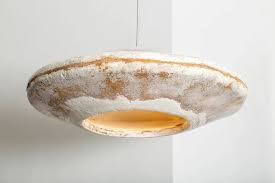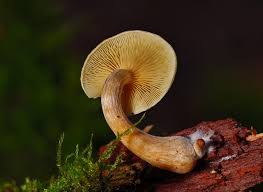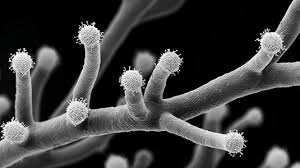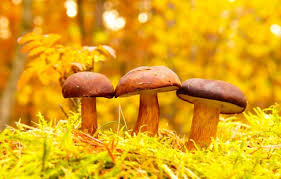Mycelium, the vegetative part of a fungus, is a remarkable and often overlooked biological structure that plays crucial roles in various ecosystems and has significant implications for human life.
At its most basic level, mycelium consists of a network of fine, thread-like structures called hyphae. These hyphae are incredibly thin, often microscopic in diameter, but they can spread over vast areas. A single mycelial network can cover large portions of soil, decaying wood, or other substrates, creating an intricate web that is both delicate and powerful.
One of the most important functions of mycelium is its role in decomposition. Fungi are nature's decomposers, and mycelium is at the forefront of this process. The hyphae secrete enzymes that break down complex organic matter, such as dead plants, animals, and fallen leaves, into simpler compounds. This decomposition not only helps to recycle nutrients back into the ecosystem but also enriches the soil, making it more fertile for plants to grow. Without mycelium and the fungi it belongs to, the world would be filled with undecayed organic debris, and the nutrient cycle would be severely disrupted.
Mycelium also forms symbiotic relationships with other organisms. One of the most well-known examples is the mycorrhizal association between mycelium and plant roots. In this relationship, the mycelium of certain fungi attaches to the roots of plants. The mycelium extends far beyond the reach of the plant's roots, increasing the surface area for nutrient absorption. It helps the plants to take up essential nutrients like phosphorus, nitrogen, and water more efficiently from the soil. In return, the plants provide the fungi with carbohydrates produced through photosynthesis. This mutualistic relationship benefits both parties and is essential for the growth and survival of many plants in natural ecosystems.
In addition to its ecological importance, mycelium has found applications in various industries. In the field of materials science, mycelium is being explored as a sustainable alternative to traditional materials. Mycelium-based materials can be grown relatively quickly and are biodegradable. They can be used to create products such as packaging materials, insulation, and even building materials. These materials have the potential to reduce our reliance on non-renewable resources and decrease the environmental impact associated with the production and disposal of conventional materials.
Mycelium also has potential in the food industry. Some edible fungi, such as mushrooms, are the fruiting bodies of mycelium. These mushrooms are not only delicious but also nutritious, containing vitamins, minerals, and beneficial compounds. Moreover, research is being conducted on using mycelium to produce alternative proteins. Mycelium can be grown in large quantities in controlled environments, offering a sustainable and efficient way to produce protein-rich food sources that could help meet the growing global demand for food.
Furthermore, mycelium has been studied for its potential in medicine. Some fungi produce bioactive compounds, and the mycelium may be a source of novel drugs. Scientists are exploring the antibacterial, antifungal, and anti-inflammatory properties of compounds derived from mycelium, which could lead to the development of new medications to treat various diseases.
In conclusion, mycelium is a fascinating and versatile biological entity. Its role in nature as a decomposer, symbiotic partner, and its potential applications in industries such as materials, food, and medicine make it a subject of great interest and importance. As we continue to study and understand mycelium better, we are likely to unlock even more of its secrets and harness its potential for the benefit of both the environment and humanity.
Welcome to contact YITO to discuss more about mycelium packaging!
Post time: Jul-14-2025



